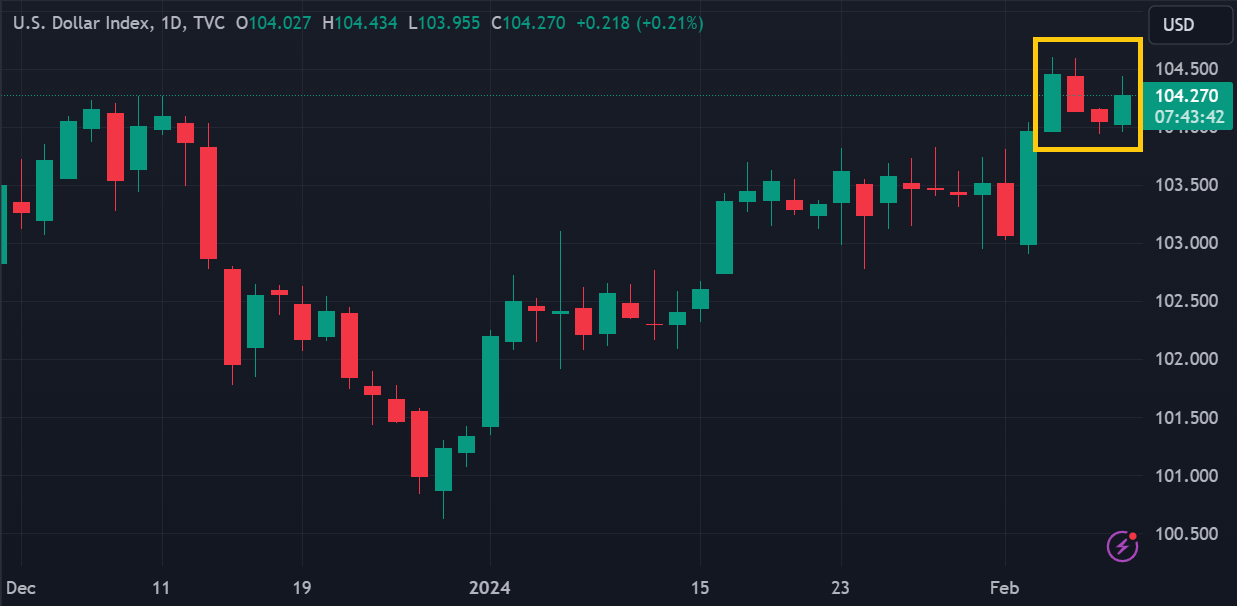The release of jobless claims data confirmed the resilience of the US labor market, thus driving dollar stabilization and Fed rate expectations.
The greenback rallied again in trading on Thursday (8/February), recovering from the profit-taking that plagued it yesterday. The release of jobless claims data confirmed the resilience of the US labor market, thereby encouraging the stabilization of the Fed's interest rate expectations. The US Dollar Index (DXY) is consolidating at around 104.26 at the time of writing.

The number of US jobless claims decreased from 227k to 218k in the week ending February 3. The figure was better than the consensus estimate of 221k.
Thierry Wizman, global FX and interest rate strategist at Macquarie New York, told Reuters that the initial jobless claims data still showed the resilience of the US labor market, which supported dollar strength. In addition, the US dollar was supported by the lack of good news abroad.
"The problem here is that we keep getting positive surprises in the US and we don't get enough positive surprises in other countries, and certainly not in China," Wizman said.
"If the dollar is going to weaken, we (first) need to see weakness in the US data as well as some improvement in the data in Europe and China," he continued, "When will that happen? Very, very hard to say."
CME's FedWatch data shows a mere 16.5% chance of a rate cut in March. Meanwhile, expectations of a rate cut starting in May are stabilized at around 80%.
The yen slumped the most in this situation. USD/JPY jumped more than 0.8% to its highest level since November 27. The yen and US dollar interest rate expectation gap widened as a Japanese central bank official made more dovish comments this morning.
EUR/USD and GBP/USD continue circulating within the ranges established earlier in the week. AUD/USD and NZD/USD were more volatile due to the lackluster Chinese market data in the Asian session.

 Dedicated FREE FOREX VPS
Dedicated FREE FOREX VPS Free FOREX Virtual Private Server
Free FOREX Virtual Private Server MT4 Demo Contest, Get $500
MT4 Demo Contest, Get $500 Sign Up for an Account, Claim 60% Deposit Bonus
Sign Up for an Account, Claim 60% Deposit Bonus Free MT4/MT5 VPS 2024
Free MT4/MT5 VPS 2024 Send E-mail and Get Free Merchandise
Send E-mail and Get Free Merchandise $1K Refer a Friend Bonus for Pepperstone Pro clients
$1K Refer a Friend Bonus for Pepperstone Pro clients Maximize Your Earnings with 100% Deposit bonus
Maximize Your Earnings with 100% Deposit bonus Trade to Win, $5,000 Monthly Demo Contest
Trade to Win, $5,000 Monthly Demo Contest Claim 30% + 15% Deposit Bonus from LiteFinance
Claim 30% + 15% Deposit Bonus from LiteFinance






